Once you make my rich and luxurious Japanese Mayonnaise (Kewpie Mayo) recipe from scratch, you’ll never go back to bottled. This wholesome spread is savory, tangy, and sweet with a thicker and creamier consistency than regular mayo.
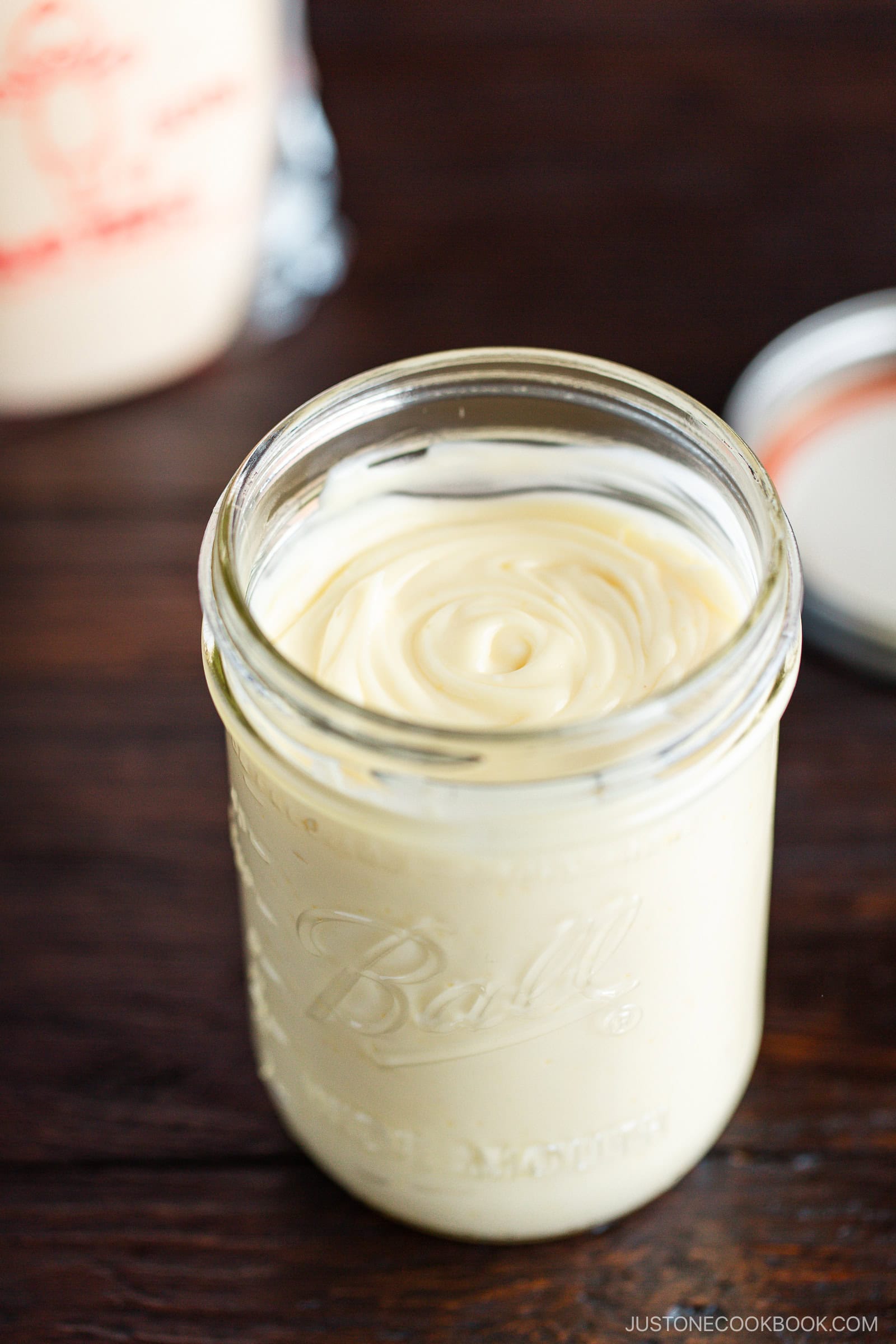
Japanese mayonnaise (マヨネーズ) is a pantry staple in almost every Japanese household, and for good reason. Better known as Kewpie mayo, it’s well loved for its rich flavor and umami goodness. This foodie favorite is actually quite easy to make from scratch. Today, I’ll teach you how to make Japanese mayonnaise at home using wholesome ingredients for a delicious, better-than-bottled version!
Have you tried making Japanese condiments? Try my Homemade Tonkatsu Sauce, Homemade Eel Sauce, and Homemade Ponzu Sauce recipes next!
Table of Contents
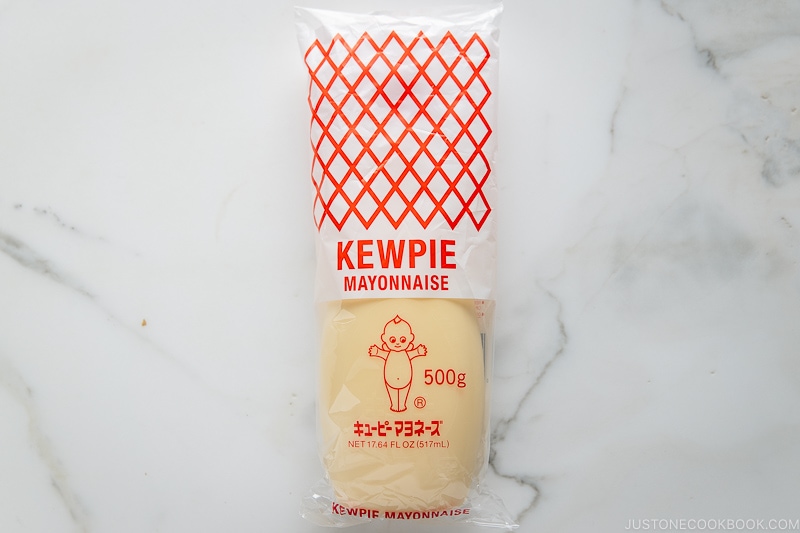
What is Kewpie Mayo?
Luxurious Japanese mayo was invented in 1925 by Toichiro Nakashima, who first discovered American mayonnaise while visiting the US and decided to create his own version. He used just the egg yolks for a thick, custard-like consistency and added rice vinegar for a sweet and subdued tang. With its signature squeeze plastic bottle, red cap, and Kewpie doll logo, Nakamura’s Kewpie mayonnaise brand is now synonymous with Japanese mayonnaise.
Why I Love This Recipe
- Uses wholesome ingredients – My recipe uses familiar ingredients from your pantry and fridge. I like that I can control the quality and know exactly what I’m feeding to my family.
- A versatile condiment – We use it on sandwiches, Okonomiyaki savory pancakes, rice bowls, onigiri, salad dressings, fusion sushi, and even pizza. When I was growing up, we even ate our salad with a dollop of Kewpie mayo!
- It’s a winner among mayo skeptics! – Many JOC readers who aren’t fond of American mayo have told me that they like Kewpie mayo. They note its slightly tangy and umami flavor and rich, creamy texture.
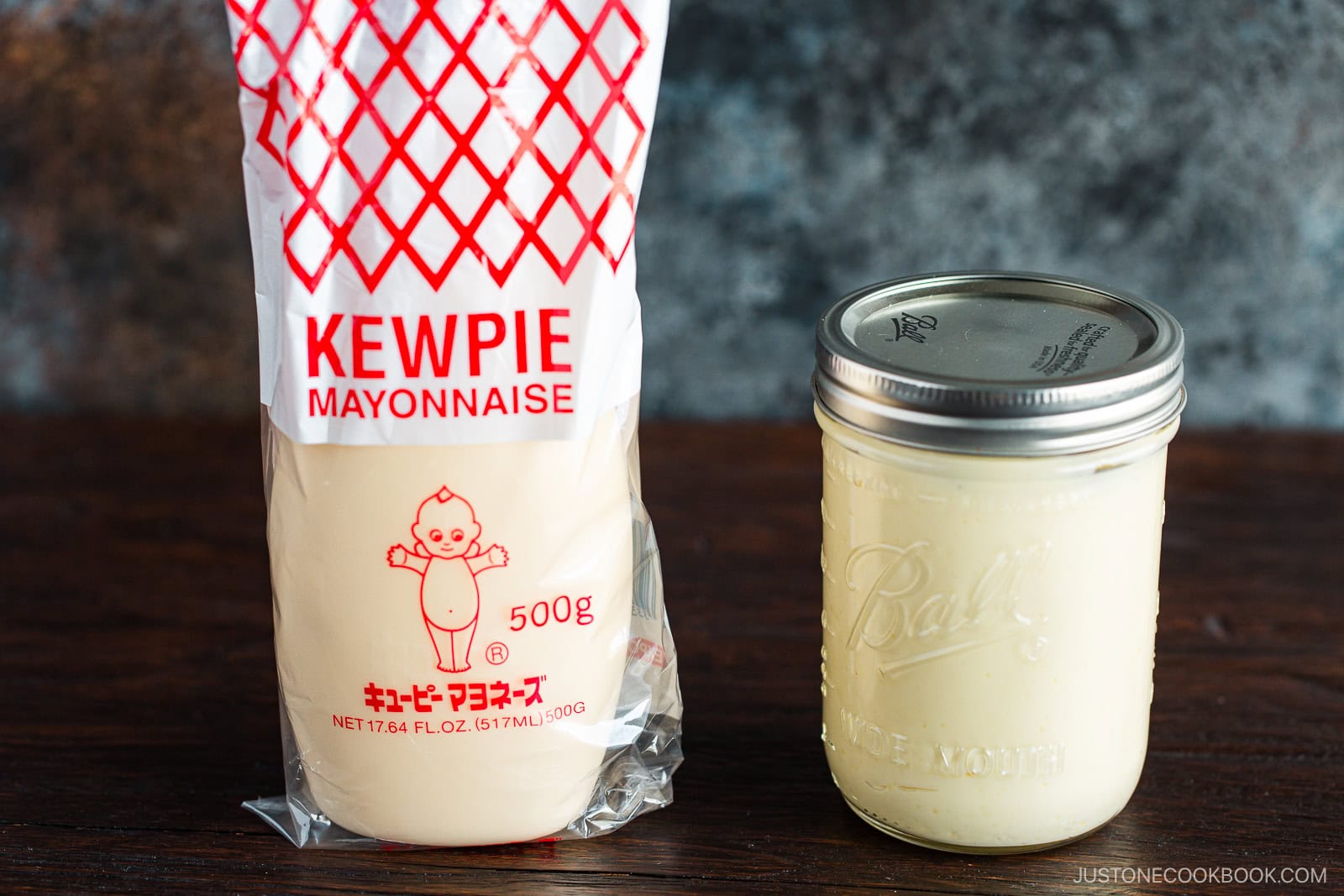
Ingredients for Japanese Mayonnaise
- Pasteurized egg yolks – at room temperature
- Neutral oil
- Dashi powder
- Dijon mustard
- Rice vinegar (unseasoned)
- Fresh lemon juice
- Sugar and kosher salt
Find the printable recipe with measurements below.
Jump to RecipeSubstitutions
- Pasteurized egg yolks – You’ll find these eggs sold at many Japanese and local markets. If you can’t find them, you can pasteurize them at home with an immersion circulator (see my recipe tips below). Alternatively, you could use very fresh, local organic eggs.
- Neutral oil – I recommend a neutral-flavored oil like vegetable, safflower, grapeseed, or canola oil. Please do not use oils with a strong flavor, like extra virgin olive oil. Also, please use fresh oil, as old oil may develop an off-taste.
- Dashi powder – This convenient ingredient boosts the umami factor. Dashi powder is sold at Japanese grocery stores, and you can often find additive-free versions. If you can’t find it, you could substitute monosodium glutamate (MSG) that’s used in store-bought Kewpie mayo. Ajinomoto is a famous Japanese brand of MSG.
- Rice vinegar – You can use Champagne vinegar, which is made from fermented champagne.
Key Kitchen Equipment
- Small food processor or blender – I used a 3-cup food processor for one batch.
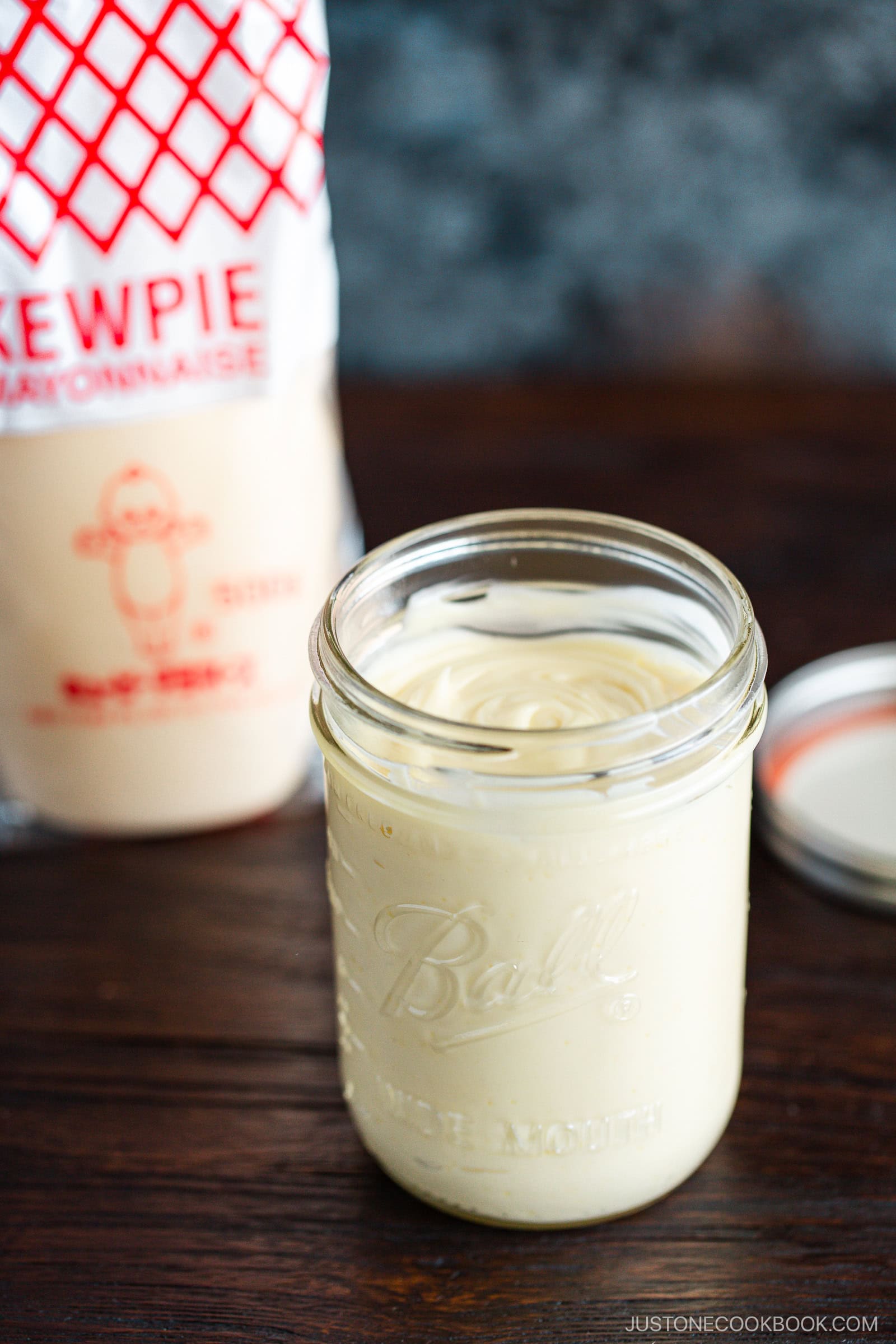
How to Make Japanese Mayonnaise
Step 1 – Process the egg yolks and mustard. Make sure the egg yolks are at room temperature. Add them and the Dijon mustard to the bowl of a small food processor or blender and process for 20 seconds.
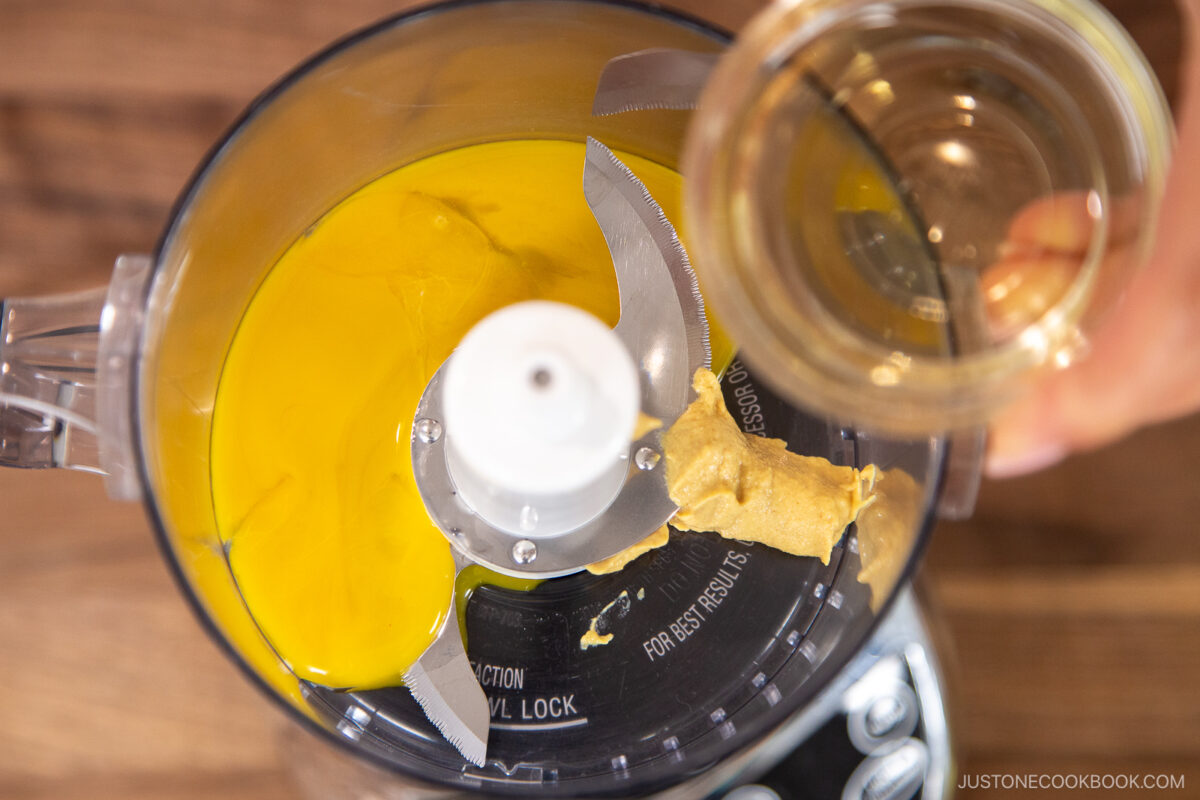
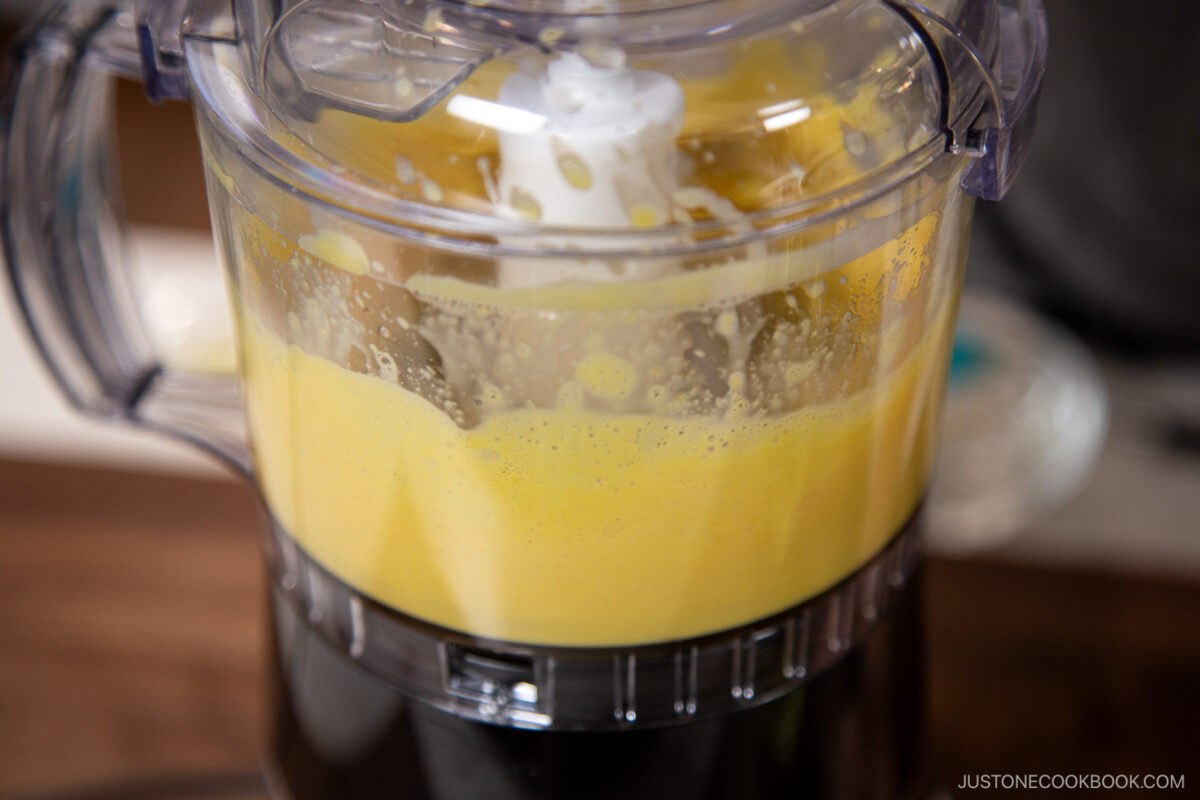
Step 2 – Slowly drizzle in some oil. With the food processor running on the Stir setting, SLOWLY add about one-third of the neutral oil in a thin, steady stream. The mixture will begin to thicken and emulsify.
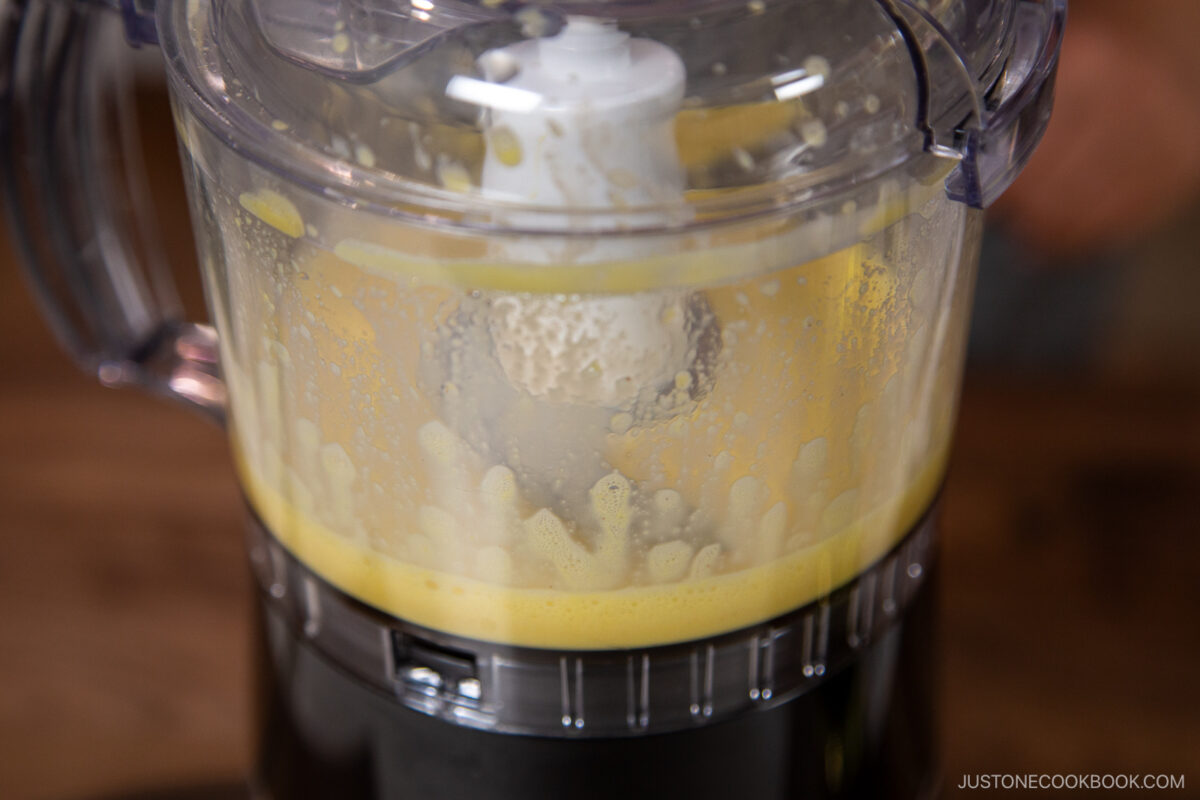
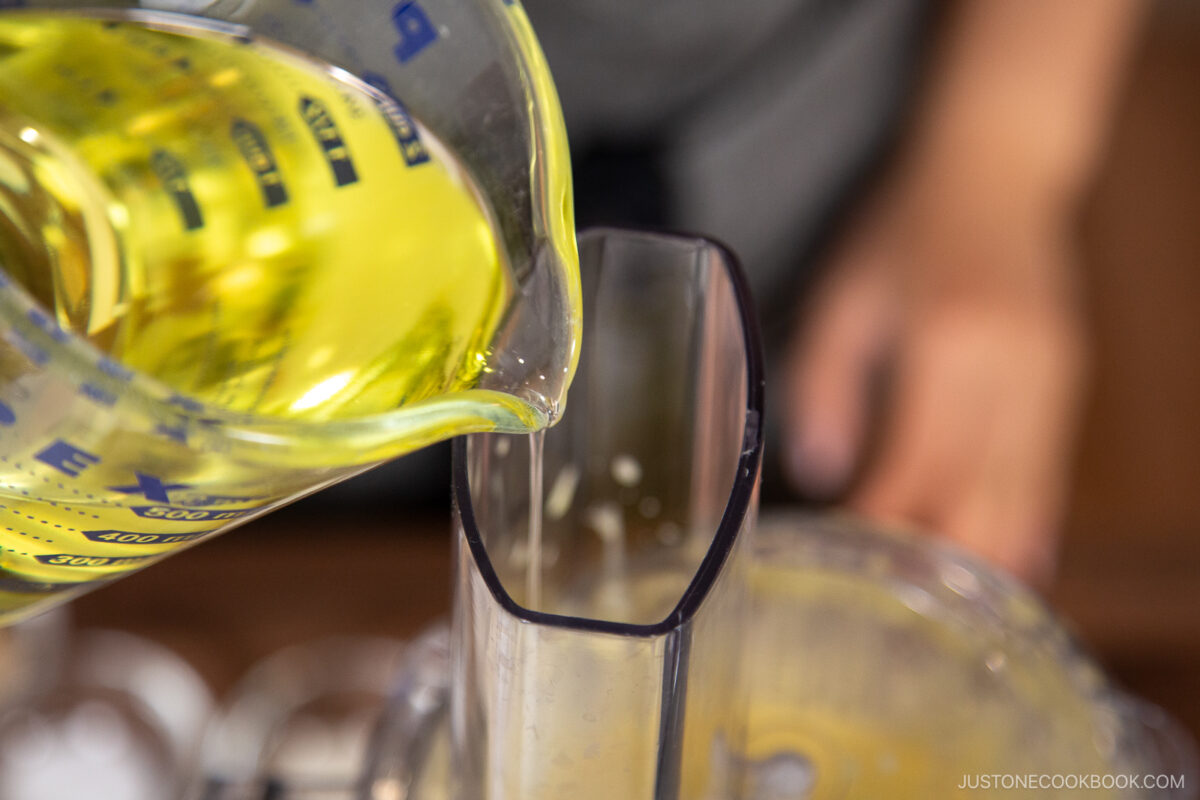
Step 3 – Add the dry seasonings and more oil. Add the kosher salt, sugar, and dashi powder and give everything a whirl again. Then, drizzle in another one-third of the oil in a thin, steady stream.
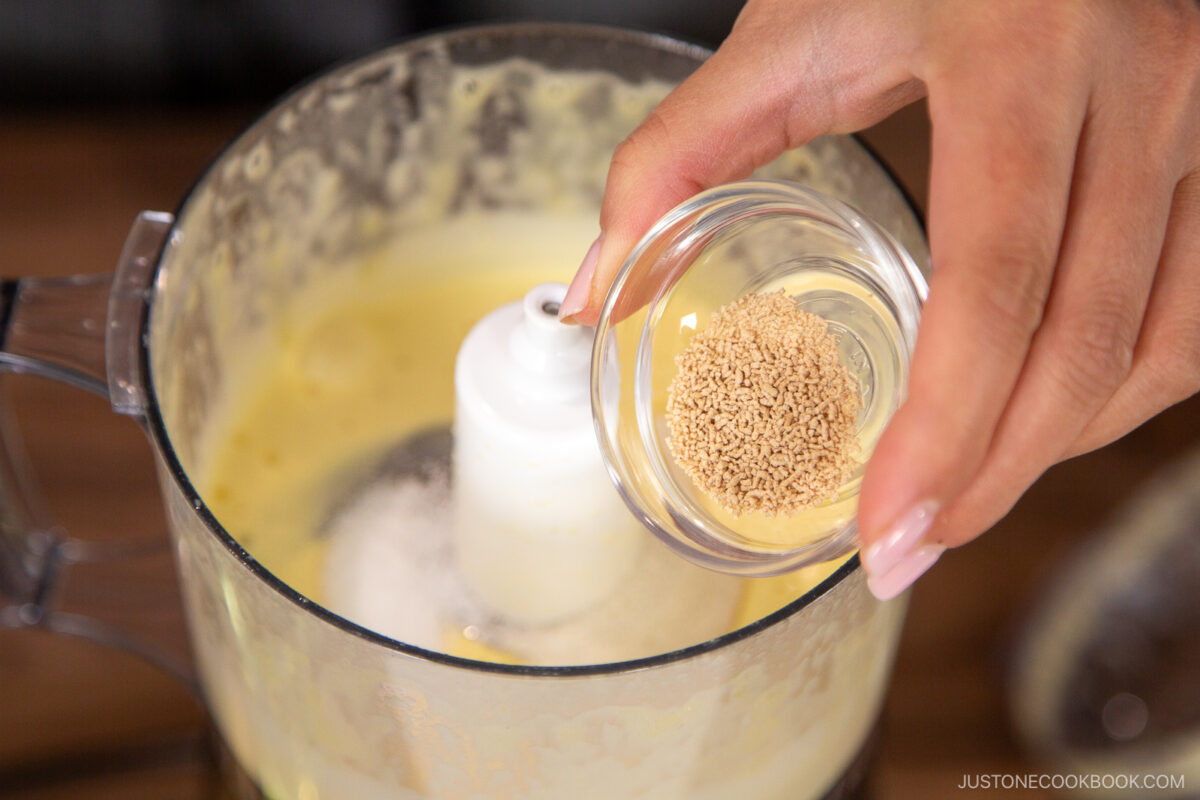
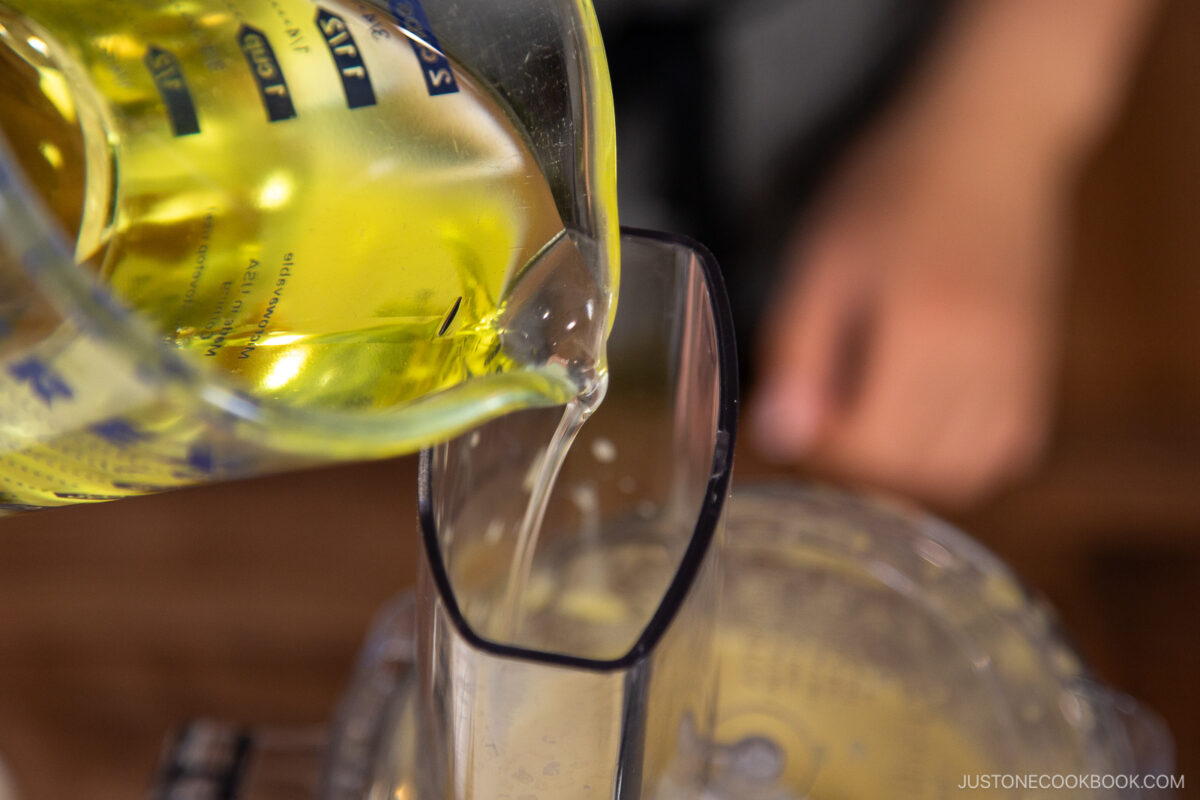
Step 4 – Add the rice vinegar, lemon juice, and remaining oil. Process for an extra 10 seconds, just until the ingredients are combined and emulsified.
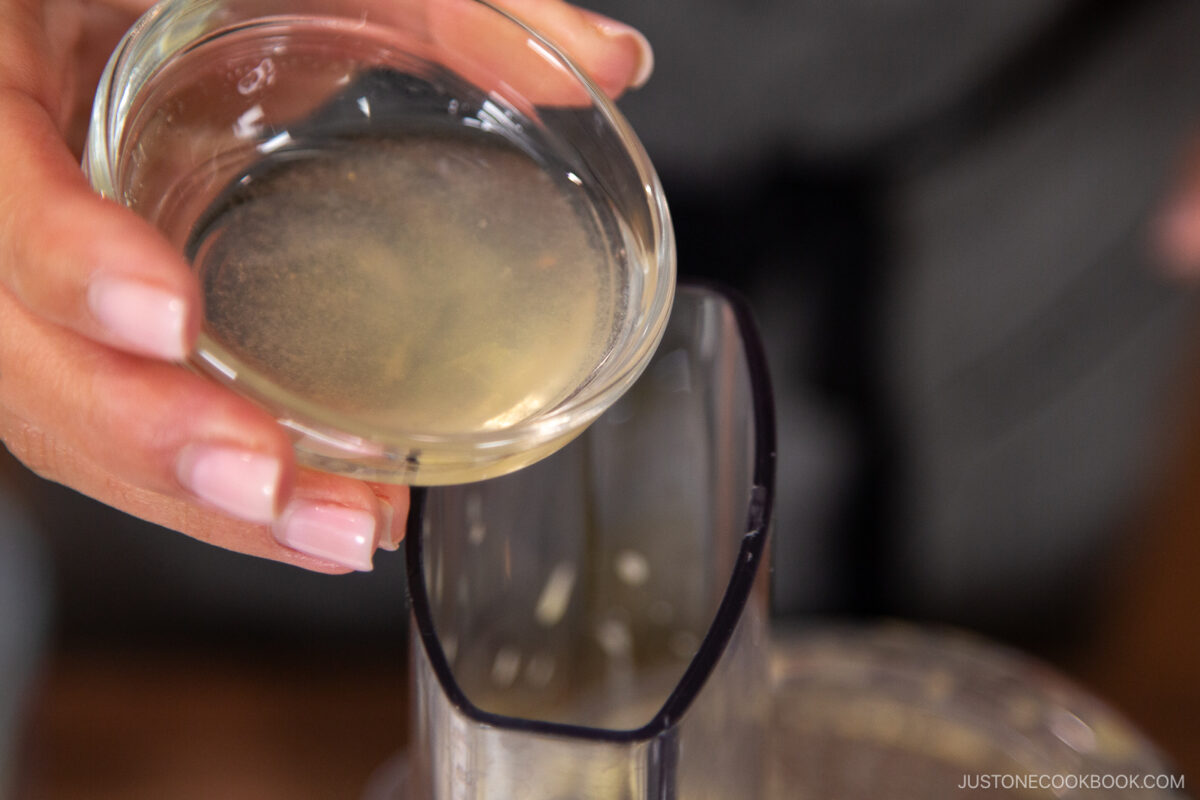
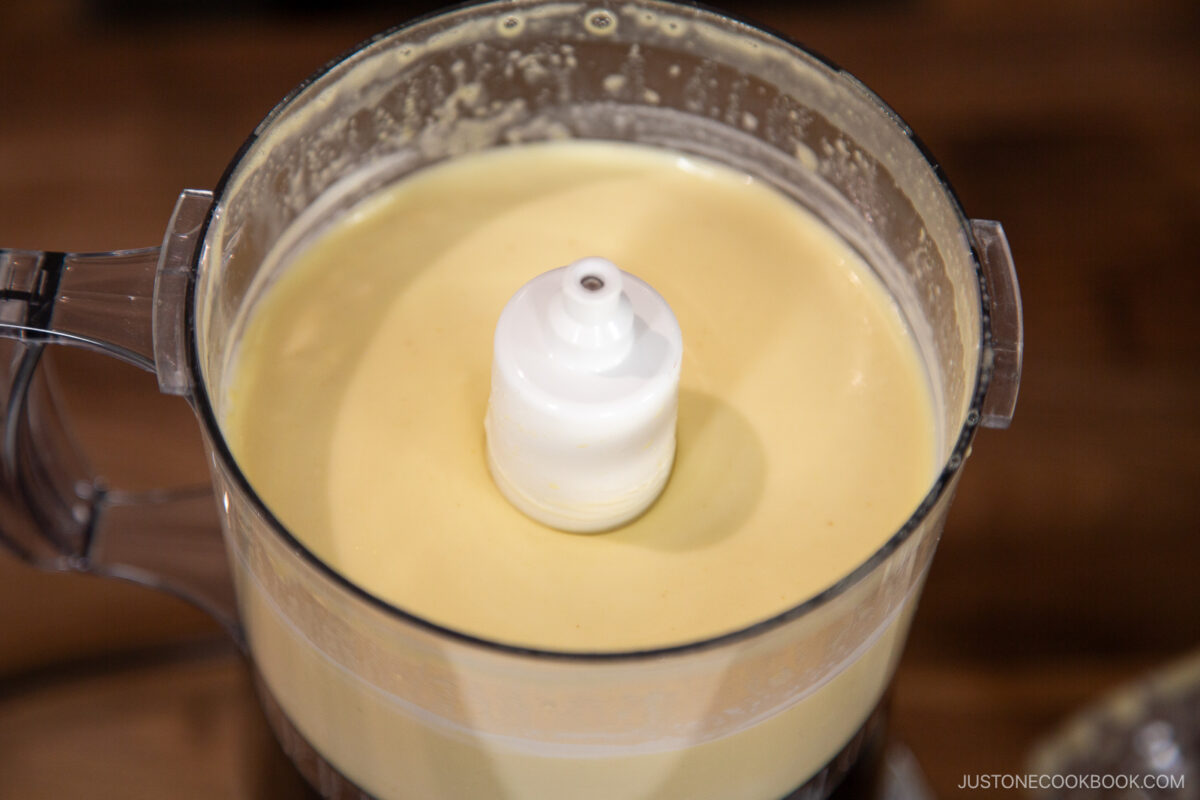
Step 5 – Taste and serve. Taste the mayonnaise and adjust with salt, sugar, or lemon juice to your liking.
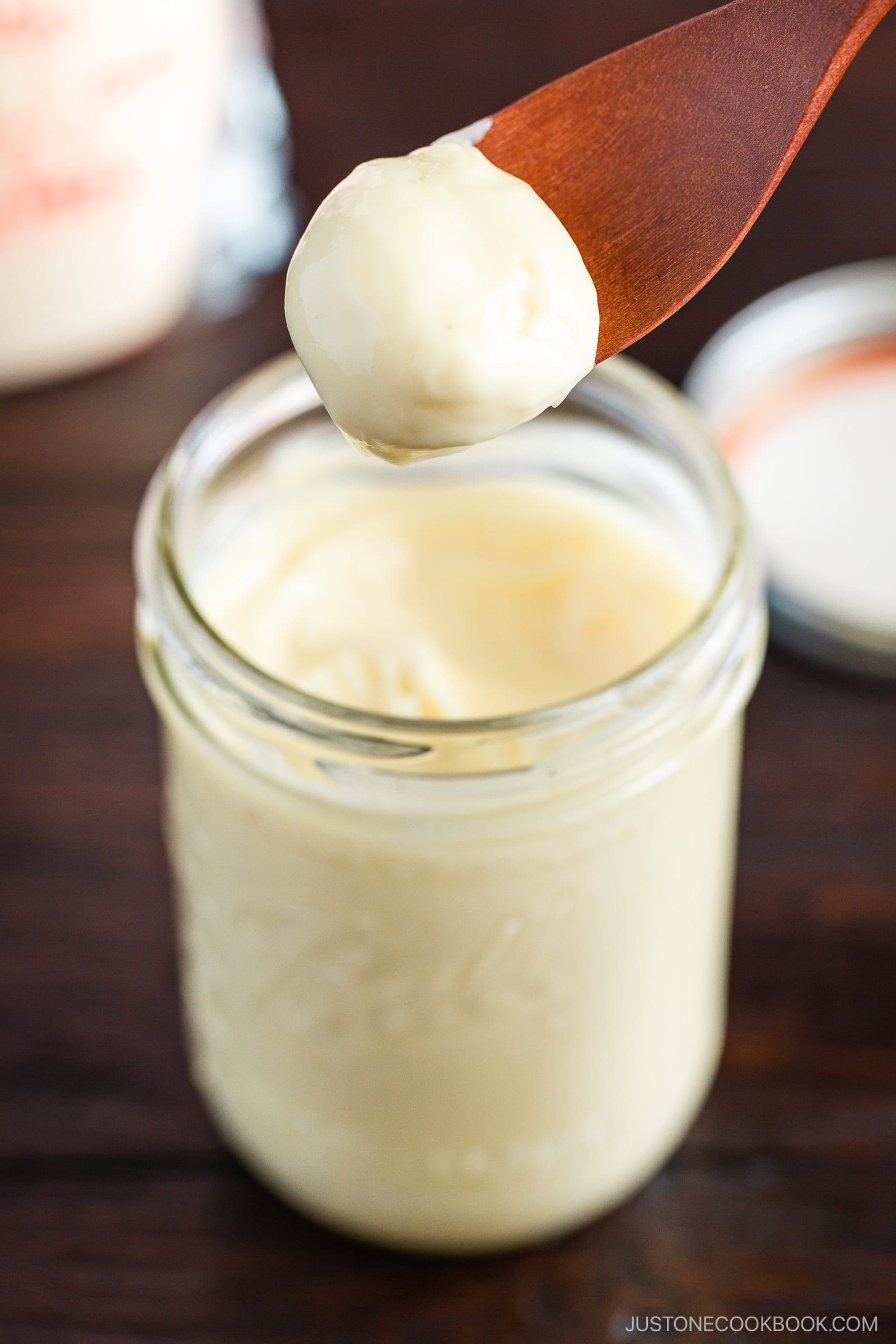
Nami’s Recipe Tips
- Use pasteurized or very fresh egg yolks – Using pasteurized eggs can reduce or eliminate the risk of salmonella bacterial infection. (Roughly one egg out of every 20,000 eggs will contain salmonella.) If you can’t find them, you can pasteurize eggs yourself with an immersion circulator; see How to Pasteurize Eggs at Home to learn more. The egg quality makes a difference, so use the freshest local organic eggs, if possible.
- Make sure the egg yolks are at room temperature – Proteins and lecithin in the egg yolk serve as emulsifiers. These molecules in cold yolks separate easily, which makes them less ideal for creating a suspension.
- Use mustard – The Dijon mustard serves two important purposes. It adds an essential flavor and further stabilizes the emulsion, as it contains small amounts of lecithin. This helps reduce the risk of the mayo breaking.
- Add dashi powder for umami – Store-bought Kewpie mayo uses the flavor enhancer monosodium glutamate (MSG). I use dashi powder instead for a similar boost of umami thanks to the powder’s kombu (dried kelp) and katsuobushi (dried bonito flakes). You can find additive-free dashi powder at many Japanese markets.
- Use neutral-flavored oil – Vegetable, safflower, grapeseed, or canola oil work well to emulsify with the egg yolk and vinegar. Since oil and water normally don’t combined easily, we need to slowly add the oil while mixing the ingredients rapidly. This disperses and suspends tiny droplets of oil to create the mayo. Never use old oil or extra virgin olive oil, as it won’t emulsify well.
- Use a blender, mixer, or food processor – The key to making mayonnaise is how small you can get the oil molecules. Using a blender, mixer, or small food processor helps churn your mayo faster, easier, and more consistently than hand whisking. Store-bought mayonnaise may be lighter since commercial machines are more powerful, but it still works to use the small appliances in your kitchen.
- Gently drizzle the oil in a thin, steady stream – To create an emulsion, you want to pour the oil as slowly as possible while rapidly blending or whisking the rest of the ingredients. Adding the oil too quickly will keep the two liquids from combining (emulsifying), and your mayo will break.
- Blend just until emulsion – Don’t whisk it for too long, as homemade mayonnaise comes together pretty quickly in the food processor or blender. Overprocessing or overheating can break the emulsion that brought the spread together in the first place.
Variations and Customizations
- Add more seasoning. Feel free to tailor the flavor to your liking. I personally added 2 more teaspoons of sugar for a total of 4 teaspoons for one batch.
- Make my shortcut version. Not everyone has the time to make mayonnaise from scratch. In this case, I suggest a shortcut for making Japanese mayo that’s not as rich and luxurious but one to use in a pinch. For 1 cup of American mayo, I whisk in 2 tablespoons of rice vinegar and 1 tablespoon of sugar. For 1 tablespoon of American mayo, whisk together ½ tablespoon rice vinegar and ⅛ tablespoon sugar.
- Make it spicy. Mixing in sriracha sauce and lime juice makes a killer sauce. I use it on fusion sushi, sandwiches, rice bowls, and tacos for an extra kick of heat. Check out my super easy Homemade Spicy Mayo Recipe that’s so good in lobster rolls and sushi rolls like dragon rolls.
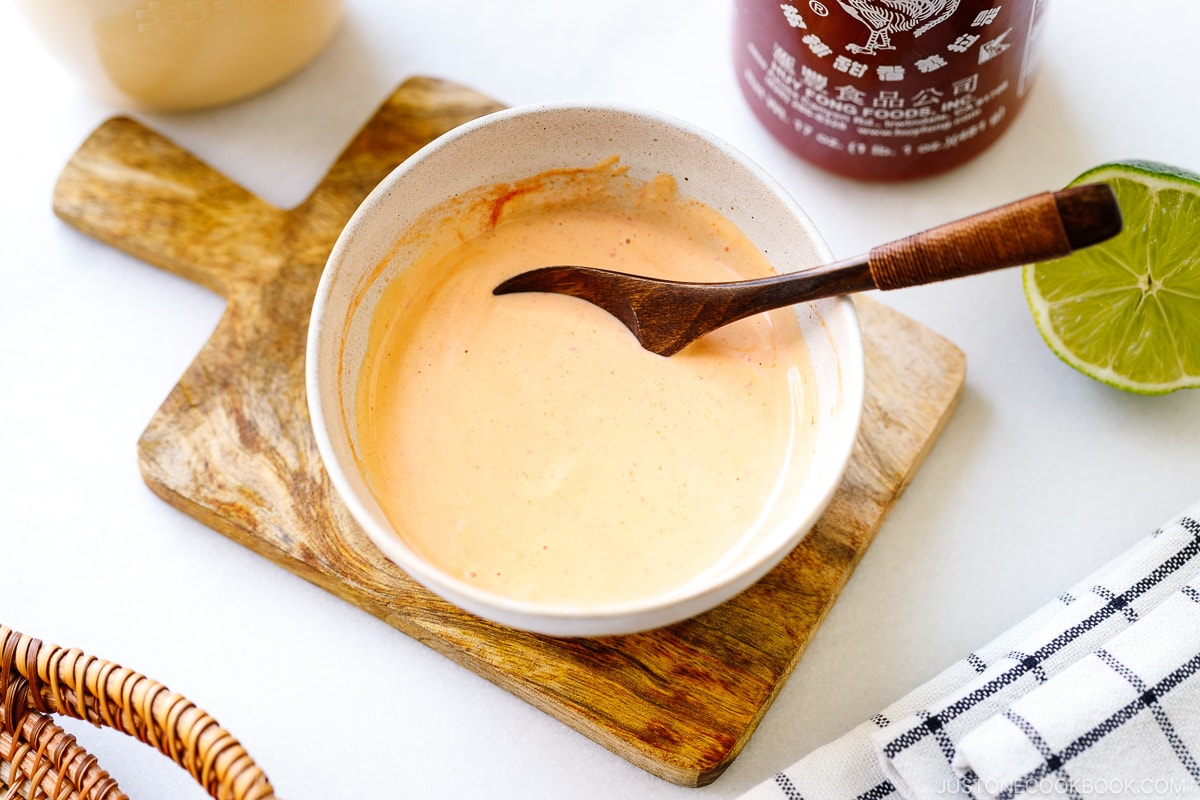
Different Ways to Use Japanese Mayo
With an irresistible flavor that’s rounded and packed with umami, it’s no wonder that Japanese mayo is a must-have ingredient in many iconic Japanese dishes! I suggest trying these popular Japanese recipes that use this delicious spread.
- In sandwiches – It’s the key flavor element that makes Japanese Egg Sandwich (Tamago Sando) so special!
- In salads – Kewpie mayo boosts the tangy and rich flavor of classic Japanese Potato Salad.
- In sushi – Mix it into the tasty crab filling for your homemade California Roll.
- As a topping – Drizzle it onto your okonomiyaki or Takoyaki for an iconic presentation and taste.
- As a dip – I love dipping crispy and juicy Karaage (Japanese Fried Chicken) into Kewpie mayo sprinkled with shichimi togarashi (Japanese seven spice).
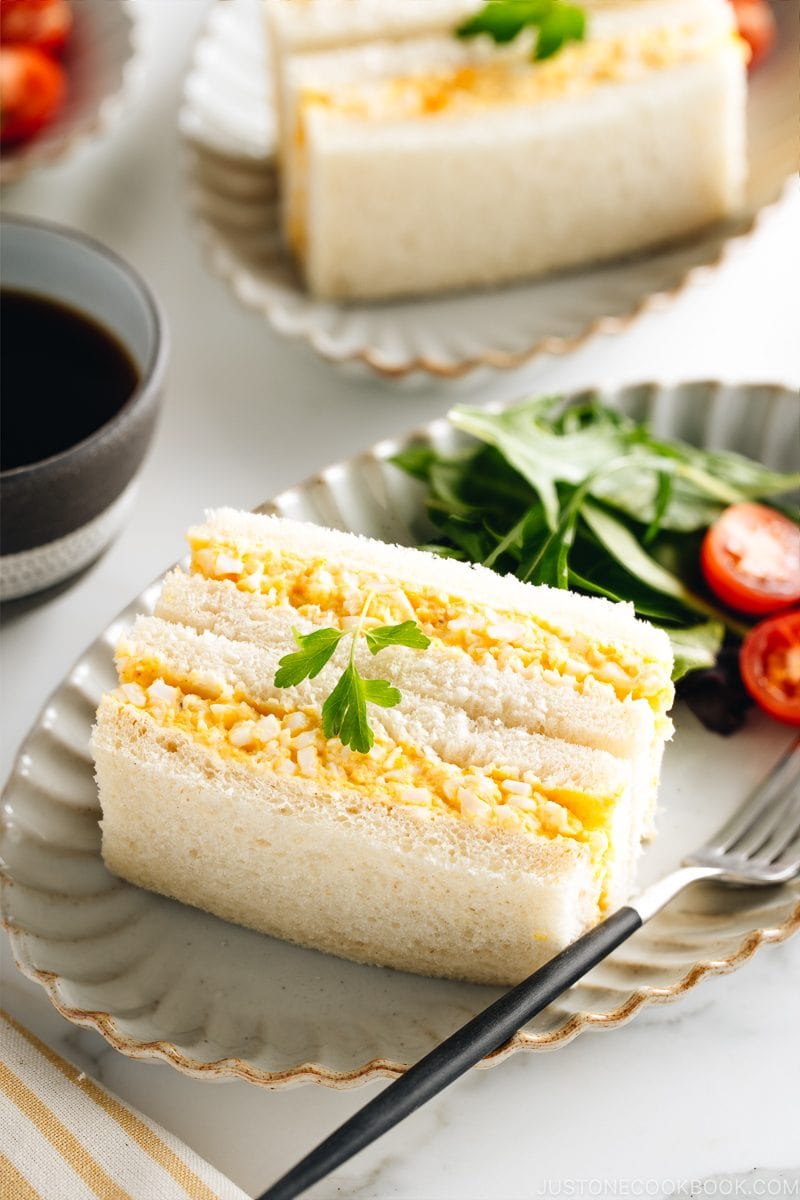
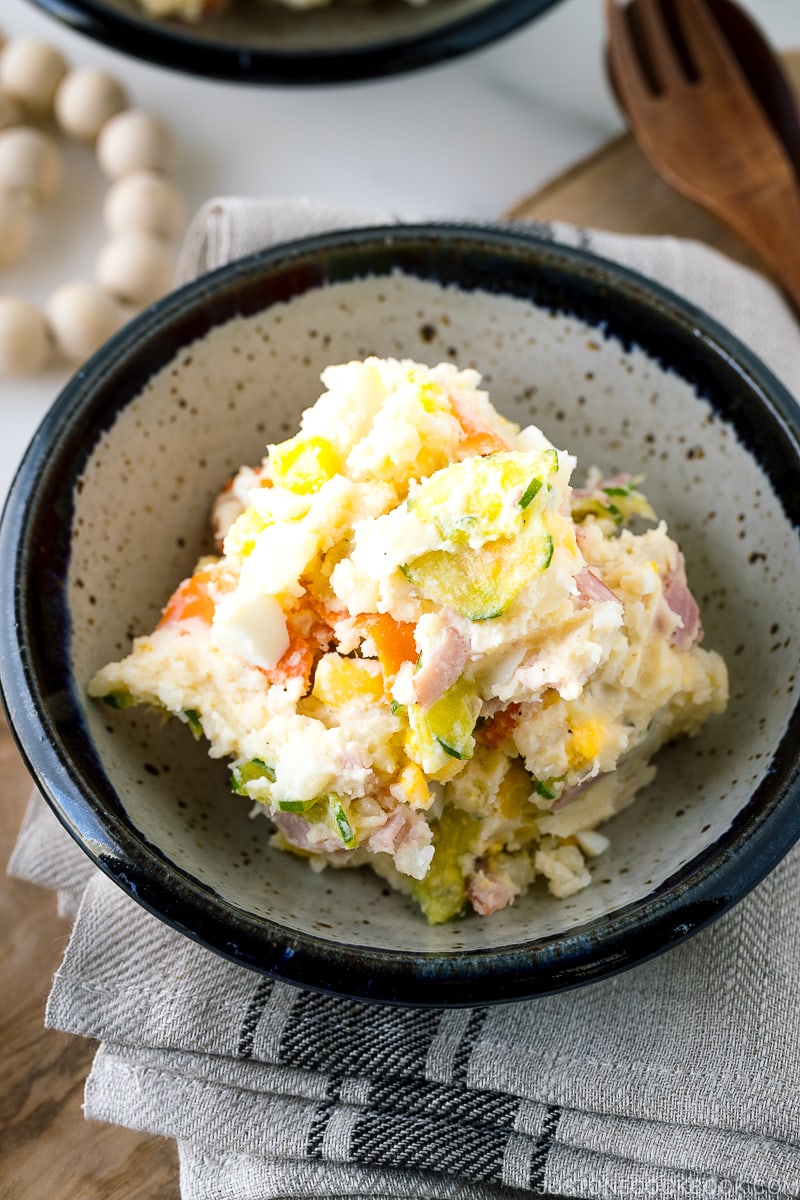
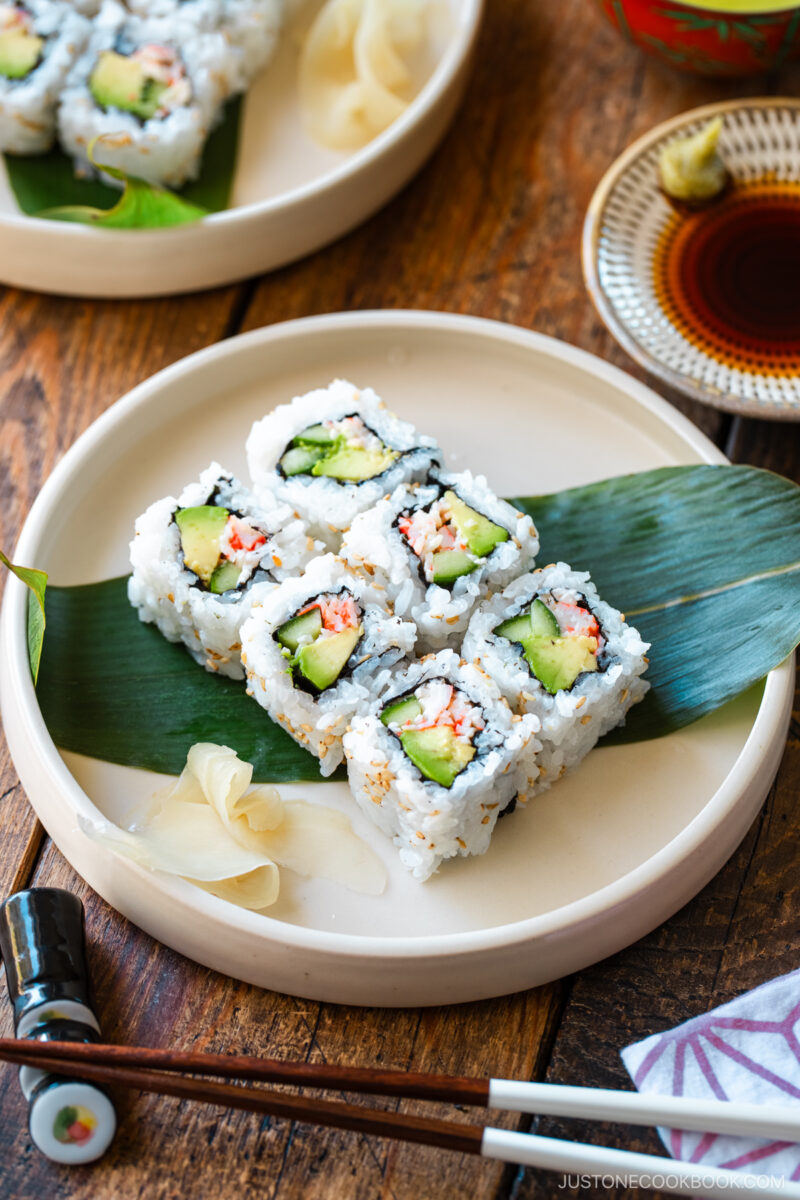
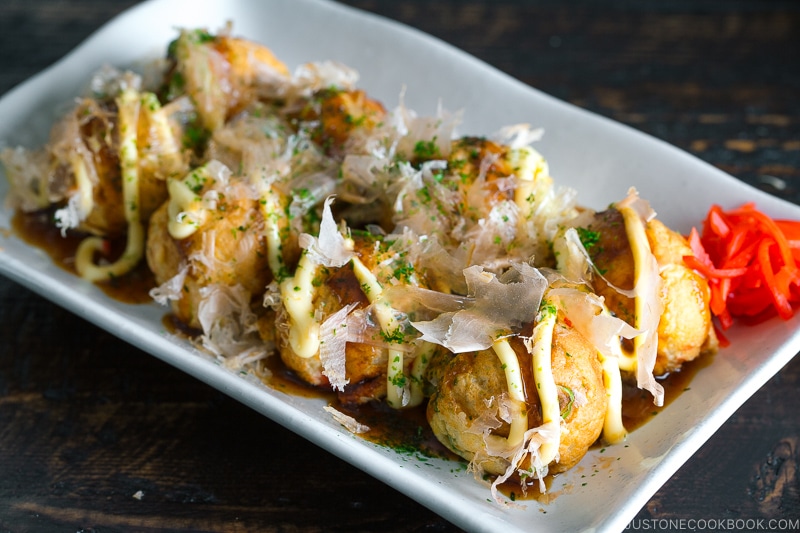
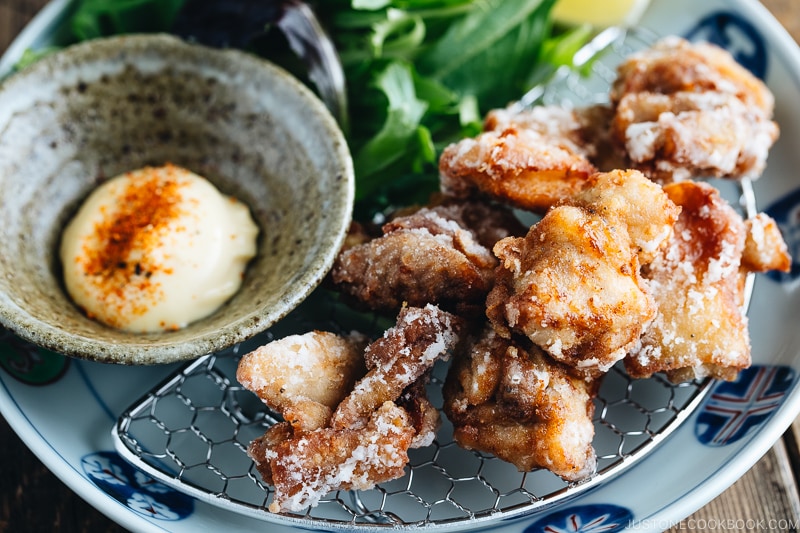
Storage Tips
To store: You can keep the mayonnaise in an airtight container and store it in the refrigerator for about 4 days.
Frequently Asked Questions
If you reduce the recipe ingredients, there won’t be enough volume for the food processor or blender to do its work, so you may need to hand-whisk the ingredients (or use a hand mixer or immersion blender).
You may have blended it too long. Overprocessing and overheating make the emulsion more likely to break. Homemade mayonnaise comes together pretty quickly in the food processor or blender, so blend it just until the emulsion forms.
You may have added your oil too quickly if your mayo didn’t come together. Make sure you drizzle it slowly in a thin, steady stream into the other ingredients with the blender or food processor running. Also, don’t use old oil or extra virgin olive oil, which won’t emulsify well.
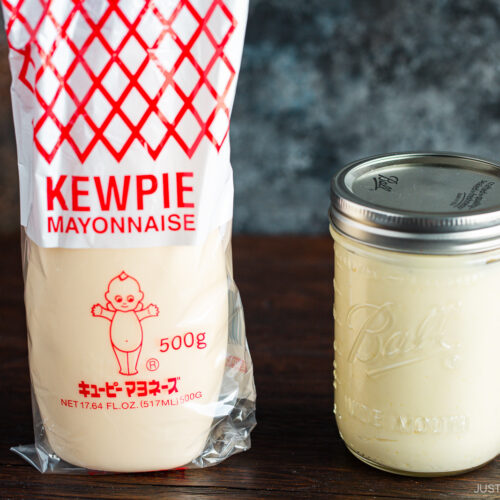
Japanese Mayonnaise (Kewpie Mayo)
Ingredients
- 2 pasteurized egg yolks (at room temperature; from the market, or pasteurize eggs at home)
- 2 tsp Dijon mustard
- 1½ cups neutral oil
- 1 tsp Diamond Crystal kosher salt
- 2 tsp sugar (plus more, to taste)
- ½ tsp dashi powder
- 2 Tbsp rice vinegar (unseasoned)
- 4 tsp fresh lemon juice
Instructions
- Before You Start: This recipe calls for pasteurized egg yolks. If you cannot find them, use the best, freshest eggs you can find. You can also pasteurize them yourself with an immersion circulator; see my tutorial How to Pasteurize Eggs at Home to learn how.
- Gather all the ingredients. Tip: If you reduce the ingredient amounts, there won’t be enough volume for the food processor or blender to do its work, so use an immersion blender instead.
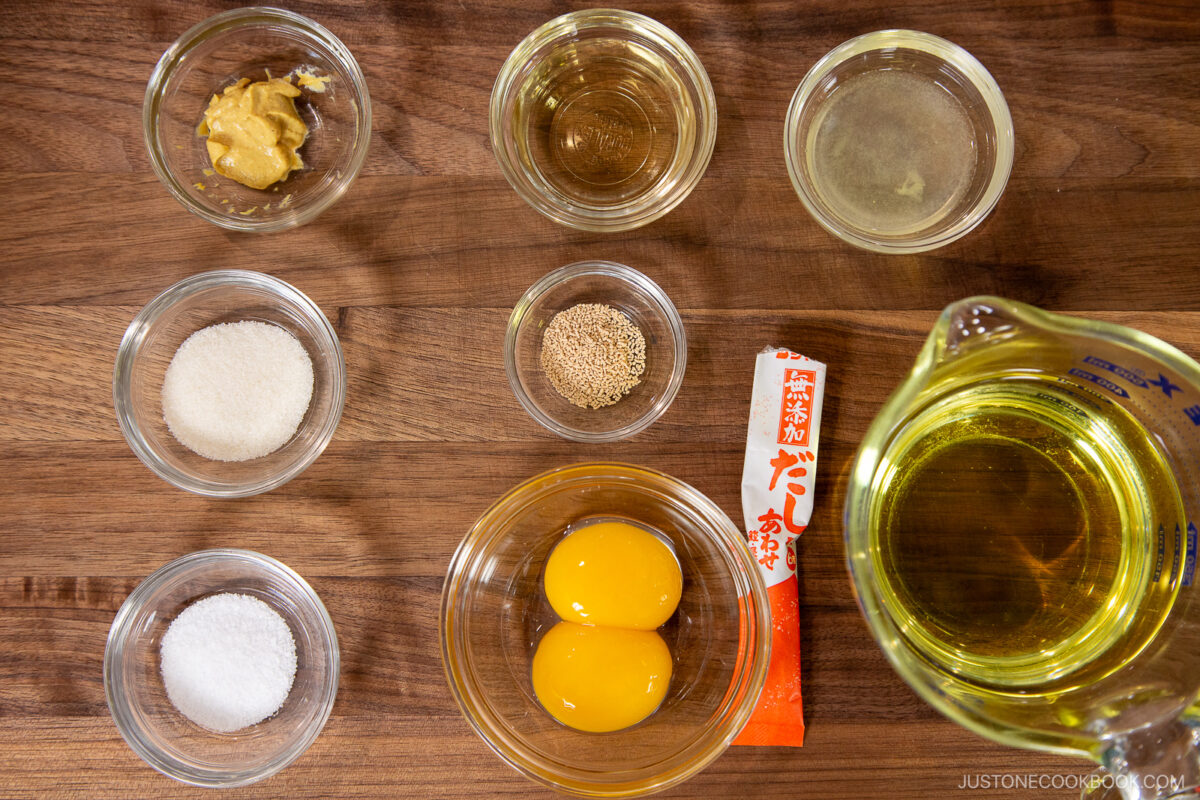
- Make sure the egg yolks are at room temperature. Put 2 pasteurized egg yolks and 2 tsp Dijon mustard into the bowl of a small food processor or a blender; I used a 3-cup food processor for one batch (yields 2 cups) of this recipe. Process for 20 seconds. Tip: Mustard adds flavor and helps to emulsify the mixture, reducing the risk of the mayonnaise breaking.
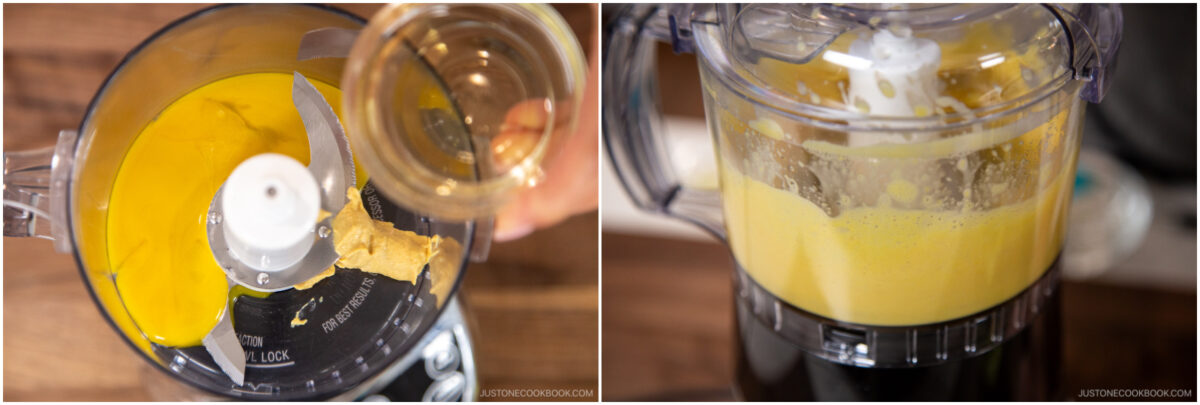
- With the food processor running, SLOWLY drizzle about one-third of the 1½ cups neutral oil in a thin, steady stream—about ½ cup oil for one batch of this recipe. The mixture will begin to thicken and come together. Tip: If you add the oil too fast, it won’t emulsify.
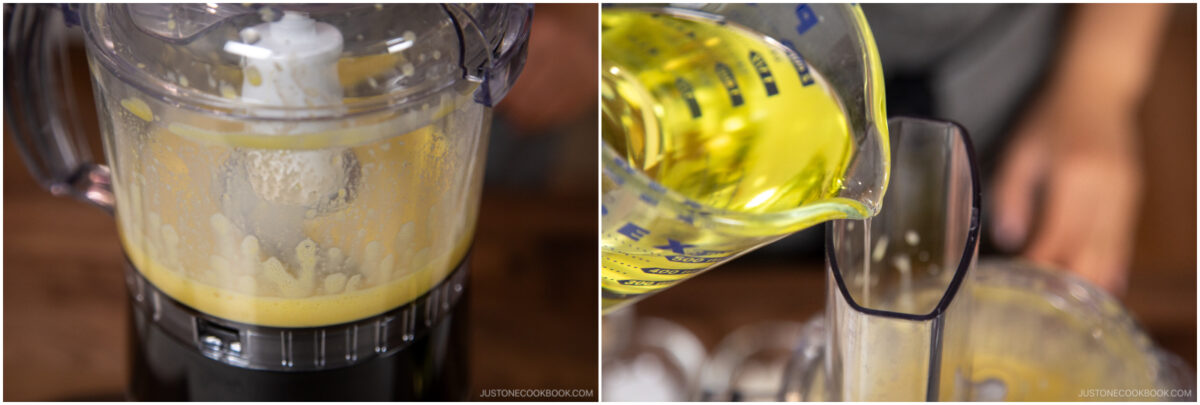
- Add 1 tsp Diamond Crystal kosher salt, 2 tsp sugar, and ½ tsp dashi powder and give everything a whirl again.
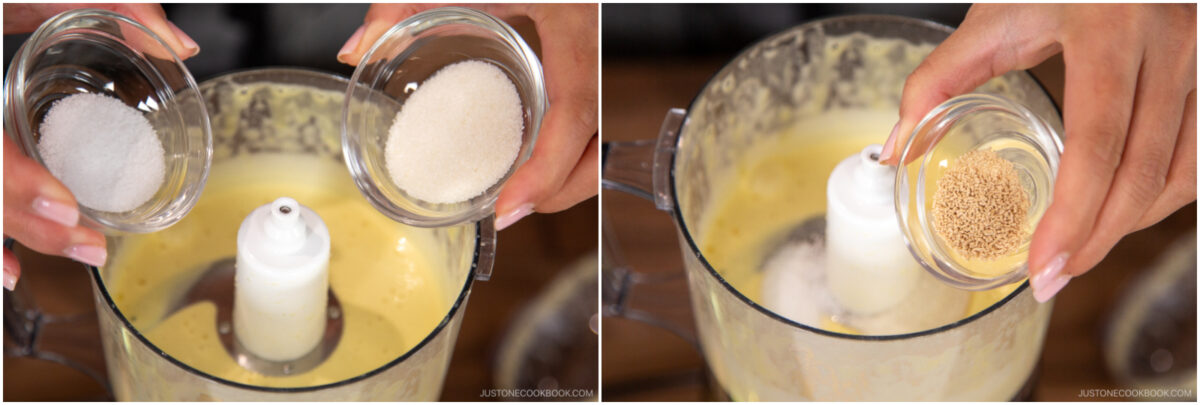
- Continue to slowly drizzle in another one-third of the oil in a thin, steady stream. I use the Stir setting while adding the oil.
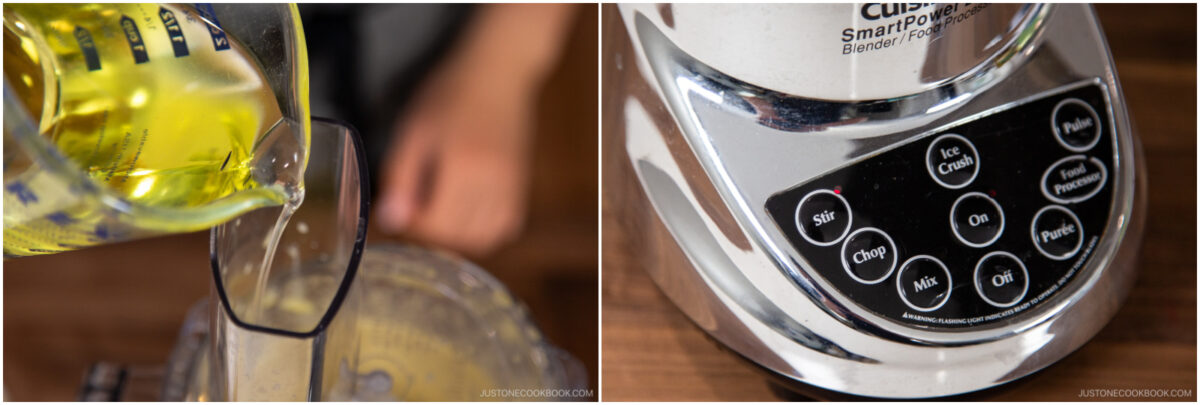
- Finally, add 2 Tbsp rice vinegar (unseasoned) and 4 tsp fresh lemon juice, and slowly drizzle in the remaining one-third of the oil and process for an extra 10 seconds, just until the ingredients are combined and emulsified. Tip: Don’t blend it for too long, as homemade mayonnaise comes together pretty quickly in the food processor or blender. When blended too long, the emulsion that brought the spread together is more likely to break, either from overprocessing or overheating.
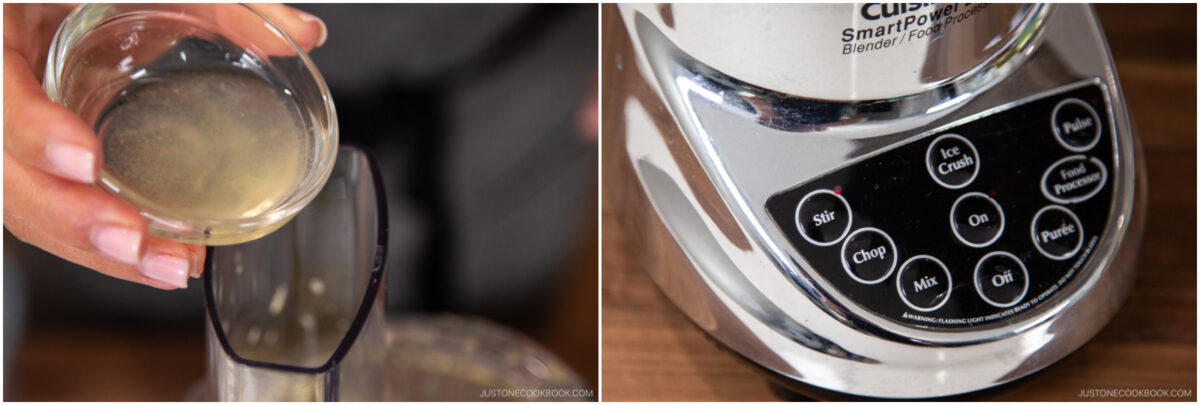
- Taste the mayonnaise and adjust with salt, sugar, or lemon juice to your liking. I personally added 2 more teaspoons of sugar for a total of 4 teaspoons for one batch. Transfer the mayonnaise to an airtight container.
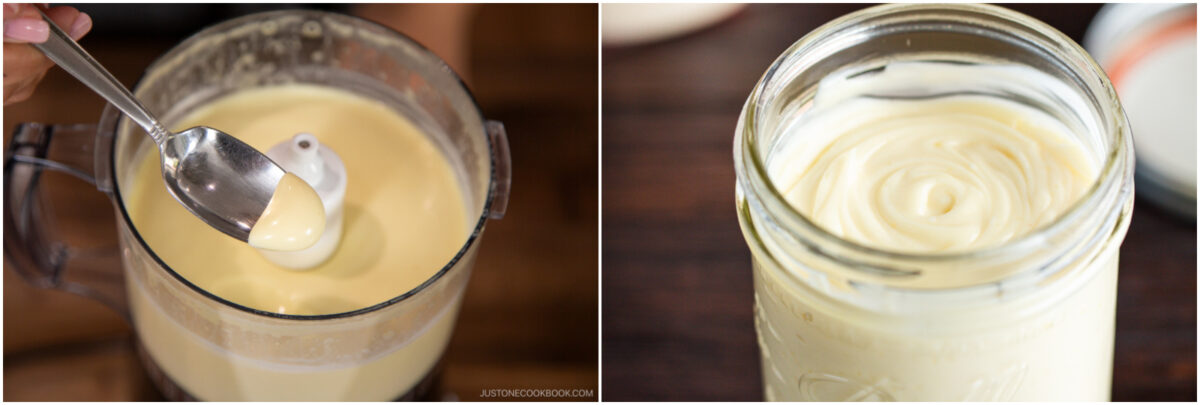
To Store
- Store the airtight container in the refrigerator for about 4 days.
Nutrition
Editor’s Note: This post was originally published on December 5, 2017. It was republished with more helpful content on April 1, 2025.
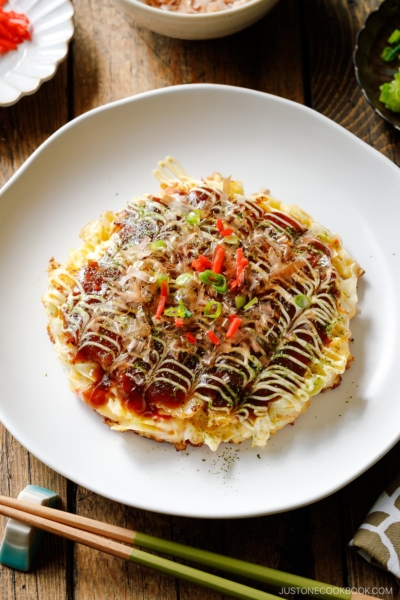
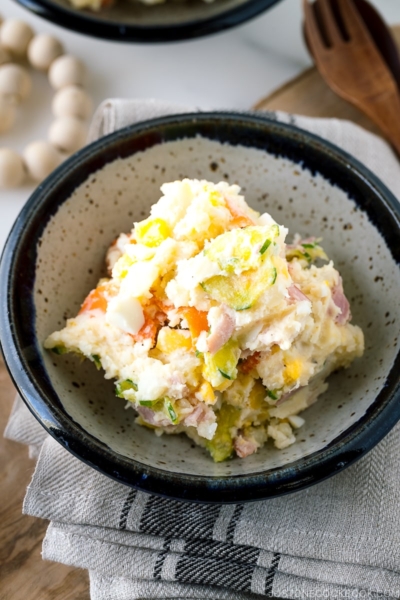
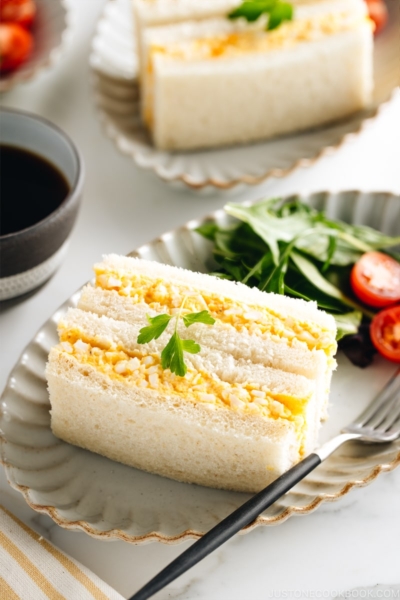
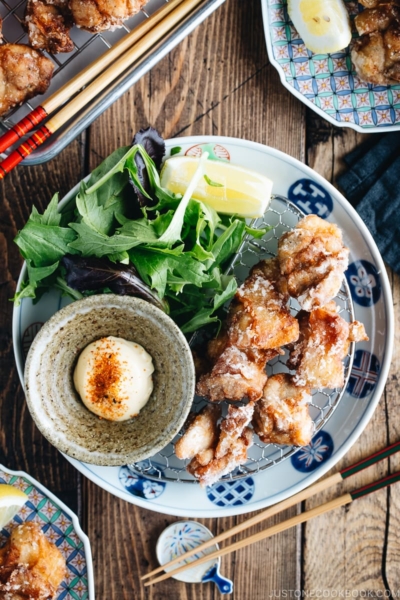




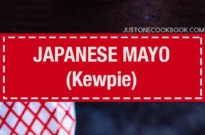
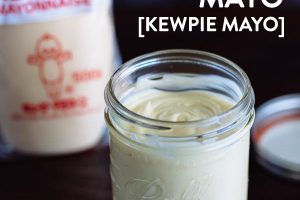
Hi! I love your recipes and everyone I make turns out great. But, I have a question on your food processor. I see it is from Cuisinart. I looked and looked for one with the stir function but couldn’t find any from any maker. I did find Cuisinarts blender with that function and more. So I bought it and is being shipped. Because of the difference in blade configuration do you think that will still work? Did you buy yours in Japan? Thank you.
Also, I bought your first cookbook when it came out in digital form. But, because of hard drive crashes I have lost it. Is there anyway to get another copy from your history records?
Hi Joseph! We sent the ebook download link to you! Let me know if you have any issue downloading. 🙂
This Cuisinart FP/Blender (in one) is from Costco or somewhere but it’s at least over 15 years old (!!). I like this one because the FP is 3 cup and small, while my regular FP is 14 cup and huge. I’m not sure what you’re looking for, but if this one breaks, I’m thinking of buying Ninja brand FP that is easy to attach from the top. For making small amount of mayo, I also recommend an immersion blender (if you don’t want hand-whisking), it works great!
Is it supposed to be so liquidy? I cut the recipe in half as I’m the only one using it and rarely use mayo, and it’s pure liquid, not solid at all.
Hi, Kiera! Thank you for trying Nami’s recipe.
The final result should not be liquid. As Nami noted in the recipe, reducing the ingredient amounts will not provide enough volume for the food processor or blender to function properly, therefore we recommend using an immersion blender instead. Hope this helps!
Thanks for this recipe. I don’t like the commercial variety as it is made with canola oil which I would never consume.
Hello, Dana! Thank you for trying Nami’s recipe!
We are glad to hear you enjoy her recipe. Happy Cooking!
isn’t the dashi powder like an instant broth? is it ok to use it directly on this recipe?
Hello, Manu! Thank you for trying Nami’s recipe.
Yes. Dashi powder is the ingredient used to make instant broth. You can also use finely ground Katsuobushi (bonito flake).
We hope you enjoy this recipe.🤗
I’m never buying mayo again! Things I did different. I put all the ingredients, along with a half teaspoon or so of kraut juice, the homemade stuff with the probiotics, all together except the oil. I blended them, then slowly added the oil, while the mixer was running the whole time. I used Avocado oil, which is healthier than the petroleum extracted seed oils. I also used 2 tsp of Brown Sugar instead of white. I used Key West lime juice (Walmart) instead of lemon because I ran out. These changes gave me an awesome flavor more so than the original Kewpie mayo. I’m sticking with this combo because it’s awesome. Now, I want it to last more than 4 days so I’m doing what I do with anything that has a very limited shelf life. Note I put kraut juice in it and blended it in, giving the bacteria plenty of O2 and proteins to feed on and expand. I leave it covered with cheese cloth on the counter for around 8 hours. This allows those probiotics to mix in the whole mayo, inoculating it and ensuring it will last maybe months in the fridge covered up. It is healthier too. Thanks for the recipe!
Hello James! We are glad to hear you enjoyed homemade mayonnaise!
Thank you for trying Nami’s recipe and sharing your experience with us!